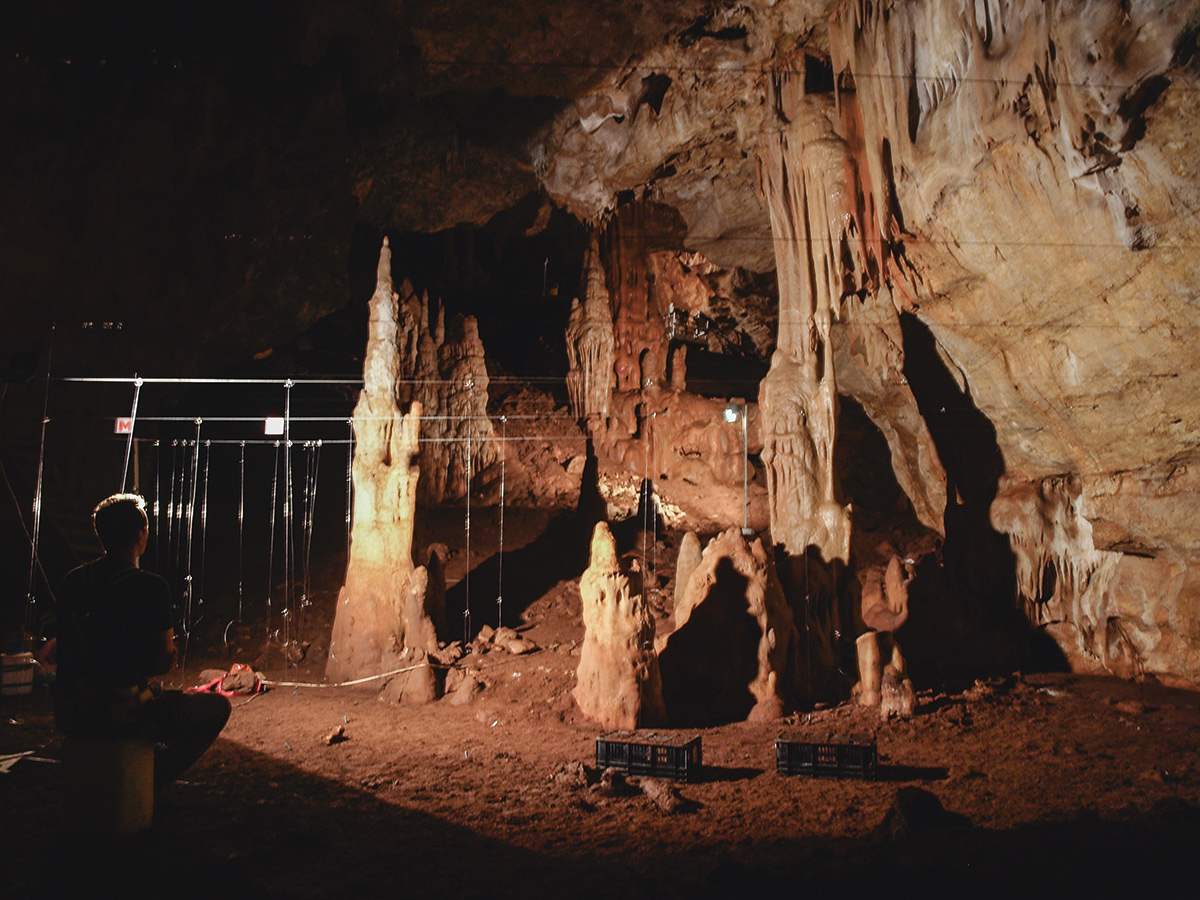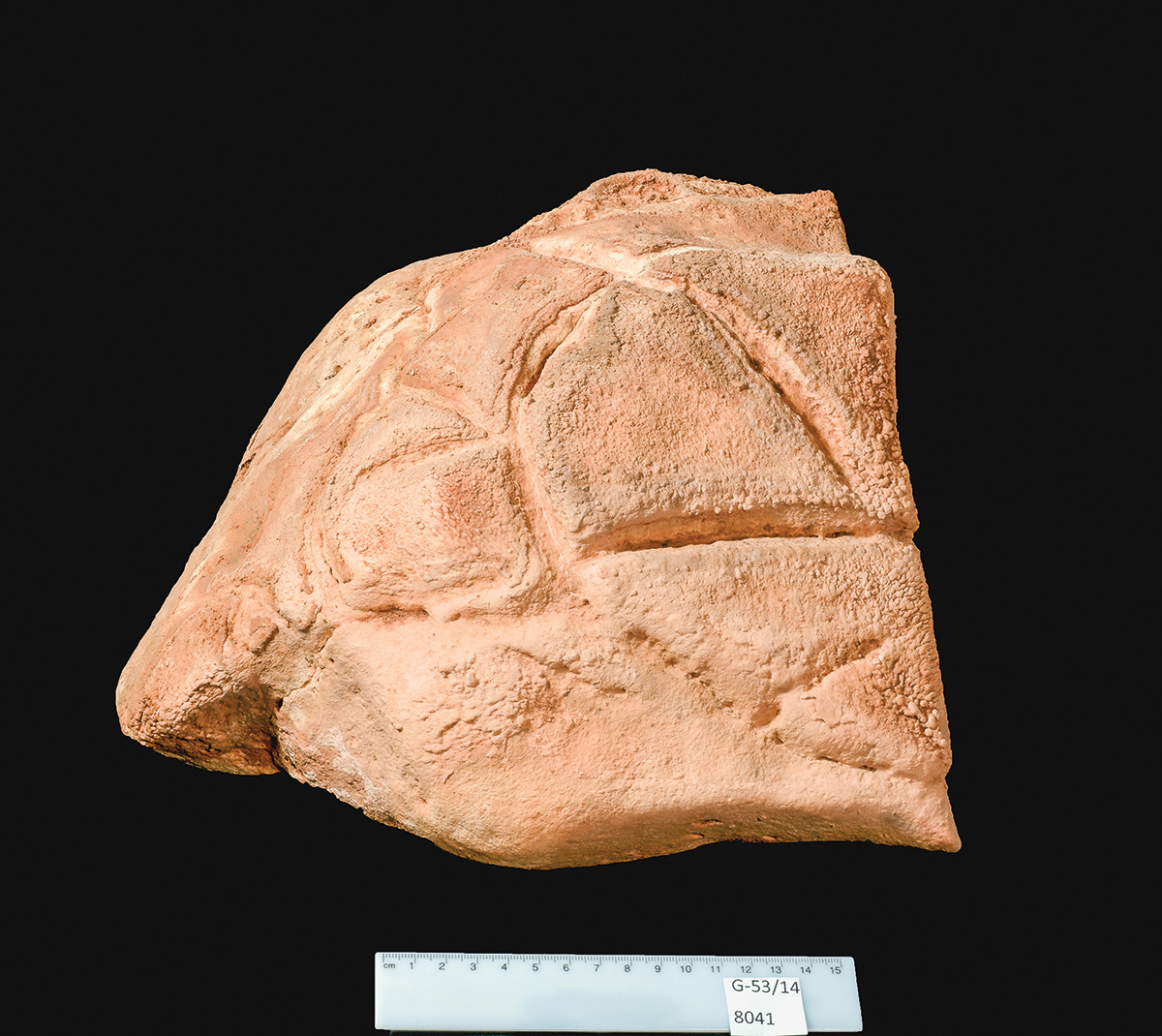lens
Digging Deep
Case Western Reserve University dental students helped excavate a cave in Israel yielding historic discoveries
 Photo by Assaf Peretz / Israel Antiquities AuthorityA large cavern inside Manot Cave in Israel may have been used for ritual gatherings by prehistoric humans.
Photo by Assaf Peretz / Israel Antiquities AuthorityA large cavern inside Manot Cave in Israel may have been used for ritual gatherings by prehistoric humans.As a first-year student at Case Western Reserve University's School of Dental Medicine, Isabella Hellmann learned how facial structure and jaw structure change as people age.
Months later she used that knowledge during an archaeological dig, assisting researchers in excavating Manot Cave in Galilee, Israel.
 Photo by Clara Amit / Israel Antiquities AuthorityAn engraved rock with a carved symbolic turtle that was placed in a niche in the cavern’s ritual space.
Photo by Clara Amit / Israel Antiquities AuthorityAn engraved rock with a carved symbolic turtle that was placed in a niche in the cavern’s ritual space.
"Anytime someone found a tooth, they would call out: ‘Bella!'" she laughed, recalling her 2023 adventure. "And I'd be able to identify it [and] from its characteristics like size and wear patterns, approximate the person's general age category [when they died]."
For more than a decade, CWRU dental students have helped excavate Manot Cave, which was used for thousands of years as a living space for Neanderthals and humans at different times.
While not trained in archaeology, dental students can quickly identify bone fragments from rock, which makes them invaluable at excavations.
"Most people would not suspect that a dental school would be involved in an archaeological excavation," said Mark Hans, DDS (DEN '79, '81), professor and chair of orthodontics at the dental school. "But one of the things that are preserved very well in ancient skeletons are teeth because they are harder than bone."
Starting in 2012, teams from CWRU helped unearth tools, fossils and charred animal bones that signified cooking in the enormous Manot Cave. They even helped identify a 55,000-year-old skull fragment.
Last year, CWRU researchers were part of a team led by Israeli researchers that reported evidence of ritualistic gatherings from 35,000 years ago—which is the earliest known from the Asian continent.
The team, which included Hans, Yvonne McDermott (GRS '19, biology) and Jerold Goldberg, DDS (DEN '68, '70), published their findings in Proceedings of the National Academy of Sciences.
The cave's living space was near the entrance, but in the deepest, darkest part of the cave, eight stories below, the new paper describes a large cavern with evidence it was used as a gathering space, possibly for rituals that enhanced social cohesion.
The cavern's touchstone is a rock carved with distinctive geometric signs resembling a tortoise shell. It was deliberately placed in a niche and possibly used during ritualistic gatherings.
The rock "may have represented a totem or spiritual figure," said Omry Barzilai, PhD, an archaeologist at the University of Haifa and the Israel Antiquities Authority, who led the team. "Its special location, far from the daily activities near the cave entrance, suggests that it was an object of worship."
Workers building condominiums in a mountain resort close to Israel's border with Lebanon discovered Manot Cave in 2008. CWRU became involved in the excavation because of Goldberg, then dean of the dental school, who committed $20,000 annually for 10 years to fund dental students' summer research there.
"I provided the commitment and the money because I wanted people to understand the breadth and intellectual interest that dental schools have," Goldberg said.





